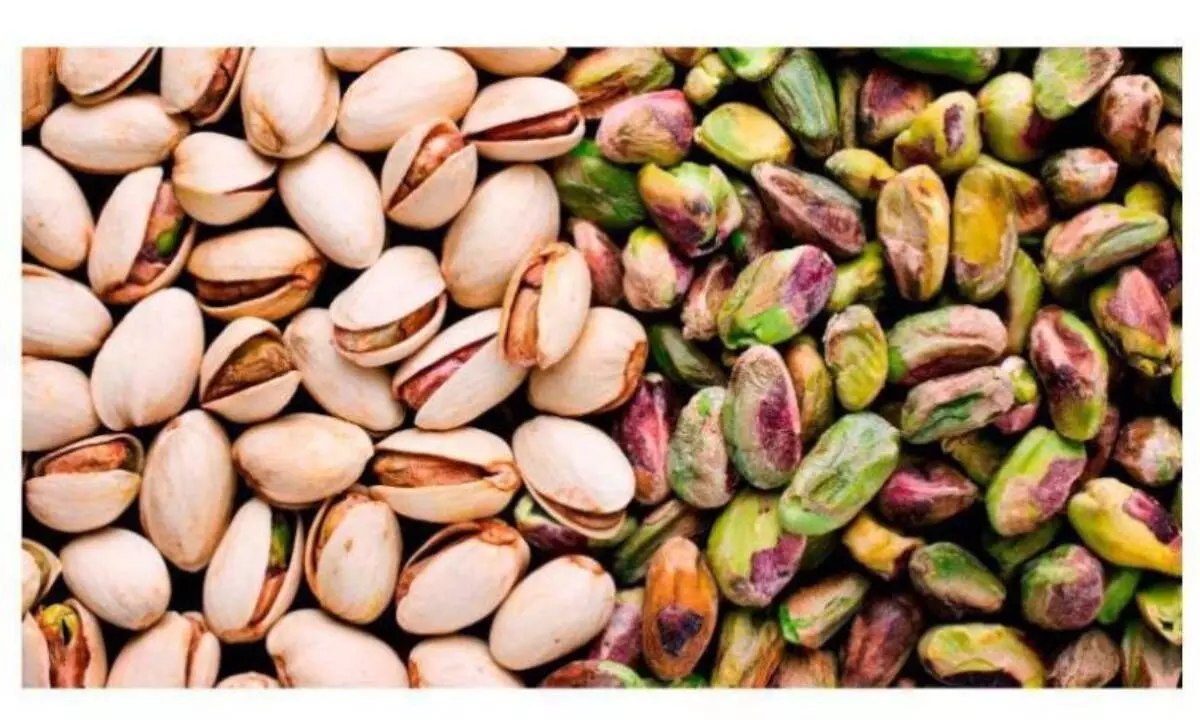Pistachios poised to become top nut in India
image for illustrative purpose

Pistachio, more particularly American pistachio, is gaining increasing popularity among the Indian consumers. So much so that various food trend studies indicate that pistachio is fast turning out to be the top and most preferred nut. By the end of 2023, it will reach there. Food industry leaders like Baum+Whiteman and Lyons Magnus also predicted the same. Beyond the taste and nutritional benefits of the nut, trends are extending into the colour – and even smell – of pistachios, with the nutty aroma now being used in candles and perfumes.
The upward journey of pistachio started particularly after the break out of the Covid pandemic. The pandemic forced consumers to reevaluate their health and wellbeing; people were forced to consider not only what they ate and how it affected them, but also how it affected the planet. The result was a movement toward plant-based proteins, and as a source of complete protein, pistachios fit the bill. Further, the sustainability of pistachios stands out from other crops; pistachios are a permanent crop that spans generations of farmers and as a high desert plant, are relatively drought tolerant.
American Pistachio Growers (APG), a non-profit trade association representing more than 865 members who are pistachio growers, processors and industry partners in California, Arizona and New Mexico, was prompt to latch on to the huge business opportunities in the large Indian market and started its consumer outreach campaign in the country precisely the same time, in 2019. Significantly, India consumes 4.5 million kg of pistachios a year and it’s growing.
The rise of pistachios in Indian cuisine brings together traditional flavours and modern influences, resulting in a delightful and flavourful experience. Moreover, with the outreach initiatives of APG, Indian consumers now started recognizing the nutritional benefits offered by these delightful nuts. Mind you that India has no commercial production of pistachios. In the past, pistachios used to be imported mainly from Iran. APG has now eaten into their market to a great extent.
It is pertinent to mention here that the main habitat of pistachio is the Middle East, especially Iran. Rafsanjan (a township) is one of the most significant areas for Pistachio production in the world. In 2004, Iran had a share of 53 per cent of the world planted area. In 2003, the area of pistachio plantation in Kerman province was 45.5 per cent and in Rafsanjan were about 20.6 per cent of total world pistachio orchards. In 2004, the area of pistachio bearing planted in USA was about 6.6 per cent of the world area. The share of Iran and USA in pistachio production in 2004 was 44 per cent and 13 per cent respectively. The total world pistachio production in 2003 was about 663.3 thousand tonne, 16.6 per cent belonged to Rafsanjan. The scenario has changed over the last few years and the US has become a significant player in the field.
Significantly, nutritionists say that foods that are rich in antioxidants help protect healthy cells from free radical damage, and proteins are like the building blocks that help with muscle regeneration and repair. And pistachios have both these powers. In addition, they also have beneficial fats, fibre and other important nutrients that our body needs every day.

